Struggling with sleep, irregular periods, mood swings, or sudden weight gain? It might be a sign of hormonal imbalance. When your hormones are out of balance, you may experience various symptoms. The good news? Exercise can be a powerful tool to support hormonal balance.
In this article, you’ll learn how exercise and hormones work together to improve your well-being, how physical activity affects your endocrine system, and other lifestyle tips to promote optimal health.
Your Cheat Sheet: Why Exercise is Key
- Exercise reduces stress and boosts mood.
- Exercise improves insulin sensitivity and balances hormones.
- Aim for both cardio and strength training sessions weekly.
- While on your period, try gentle exercises like walking or Yin Yoga.
The Importance of Hormonal Balance
While hormonal changes are often linked to menopause, they can occur at any stage of life — even in your 20s or 30s.
Hormones are sensitive to changes in diet, stress, sleep, exercise and environment, which can disrupt their balance. Hormonal imbalances can also stem from conditions like polycystic ovary syndrome (PCOS), diabetes and thyroid disorders or hormonal contraceptives.
Common hormonal imbalance signs include irregular periods, mood swings, fatigue, weight gain, acne, and changes in sleep patterns. That’s why maintaining a consistent hormonal balance is crucial.
4 Ways Exercise and Hormones Are Linked
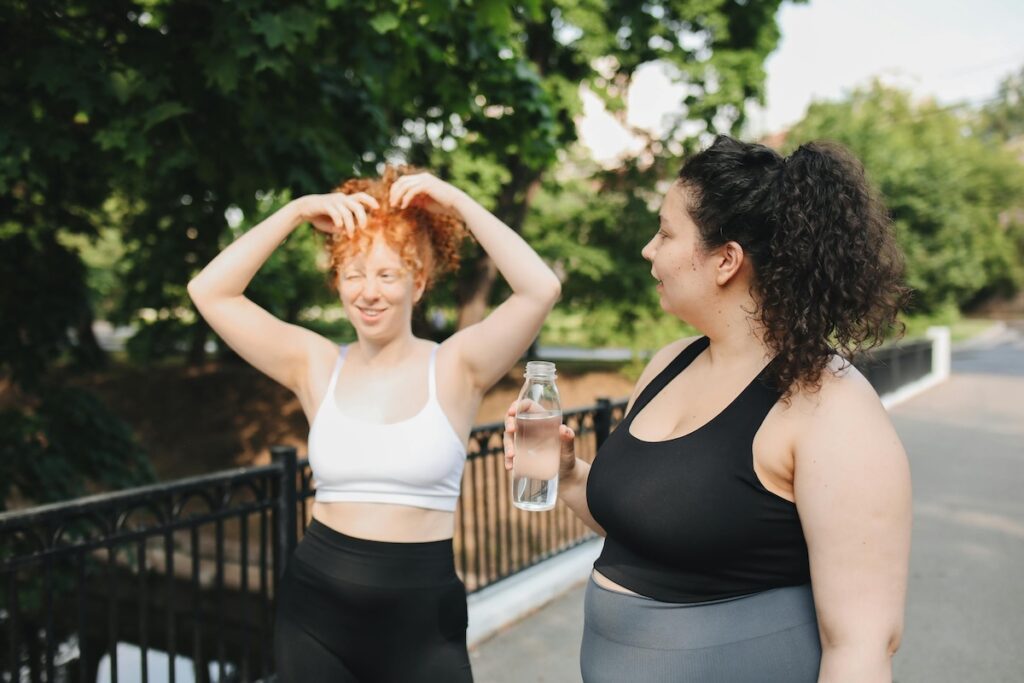
Exercise is crucial for keeping women’s hormones balanced. It helps regulate stress hormones, improve insulin sensitivity, and balance reproductive hormones.
Exercise Reduces Cortisol
Cortisol, known as the stress hormone, is produced in response to stress. Moderate exercise helps reduce cortisol levels over time, improving stress resilience. A study published in Psychoneuroendocrinology found that regular intense exercise helps reduce the body’s stress response.
Exercise Balances Estrogen and Progesterone
During different phases of the menstrual cycle, the levels of estrogen and progesterone fluctuate. Exercise, especially strength training, can help balance these hormones, reducing symptoms of Premenstrual Syndrome (PMS) and improving overall hormonal health.
Exercise Helps To Balance Blood Sugar
Insulin imbalance can lead to weight gain and fatigue. Strength training and cardio improve your body’s response to insulin, helping stabilize blood sugar levels. A study found that exercises like Pilates, along with resistance training, improved insulin sensitivity among women.
Exercise releases Feel-Good Hormones
Exercise releases endorphins, known as “feel-good hormones,” and increases serotonin levels, both of which improve mood and mental health. These benefits are especially noticeable during and after workouts, when mood-boosting hormones are elevated.
Top 5 Exercises for Hormone Balance
1. Strength Training
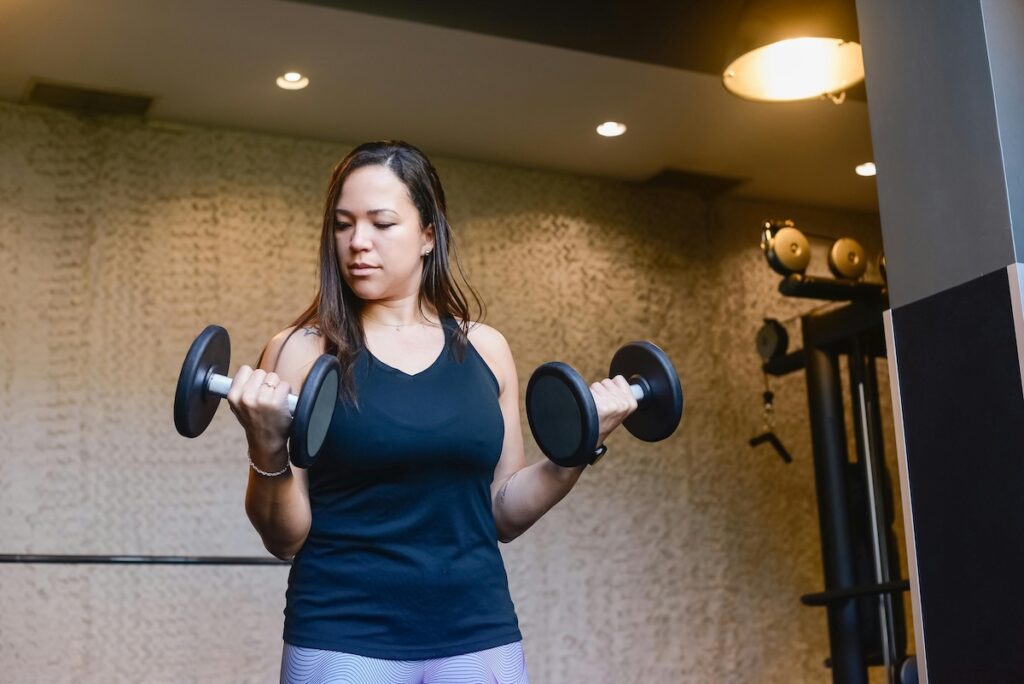
Benefits: Strength training builds muscle, reduces fat, and balances insulin levels.
Workout Routine: Aim for 2 strength training sessions per week, focusing on major muscle groups.
Pro Tip: Once a week, focus on upper-body strength exercises, and the next time, switch to lower-body workouts.
2. Low-Intensity Cardio

Benefits: Activities like walking, moderate running or cycling lower cortisol without adding stress.
Workout Routine: Aim for 30 minutes of moderate cardio most days.
Pro Tip: Next time you head to the post office or grocery store, try walking instead of driving.
3. Yoga
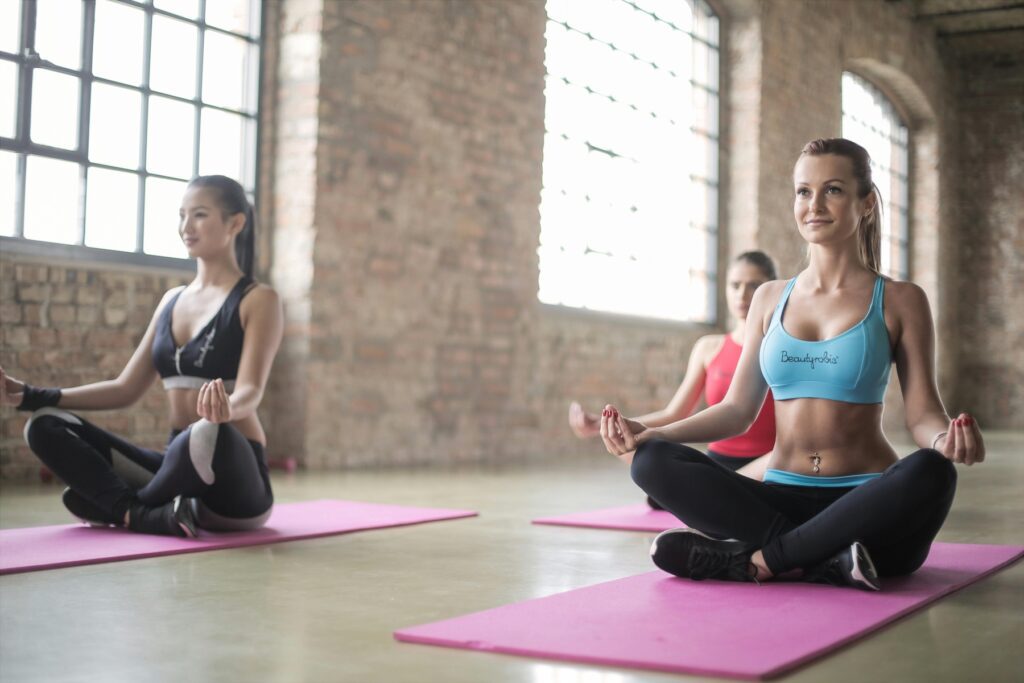
Benefits: Improves blood circulation, reduces cortisol, improves flexibility, and promotes relaxation.
Workout Routine: Practice once a week or several times a month to support your endocrine system.
Pro Tip: Try some of the easiest yoga poses like Bound Angle or Head to Knee Pose, they also help with period cramps!
4. Pilates
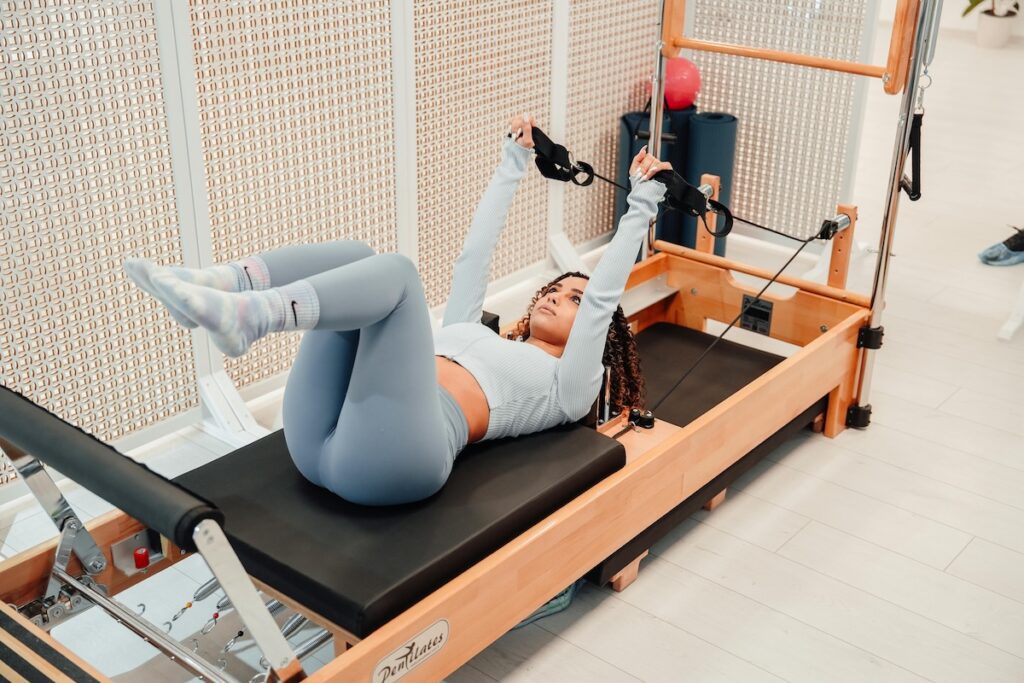
Benefits: Focuses on core strength and engages key muscles that support the hormonal system.
Workout Routine: Practice once a week or a couple of times a month for optimal results.
Pro Tip: Pilates is the best workout for focusing on your breathing.
5. High-Intensity Interval Training (HIIT)
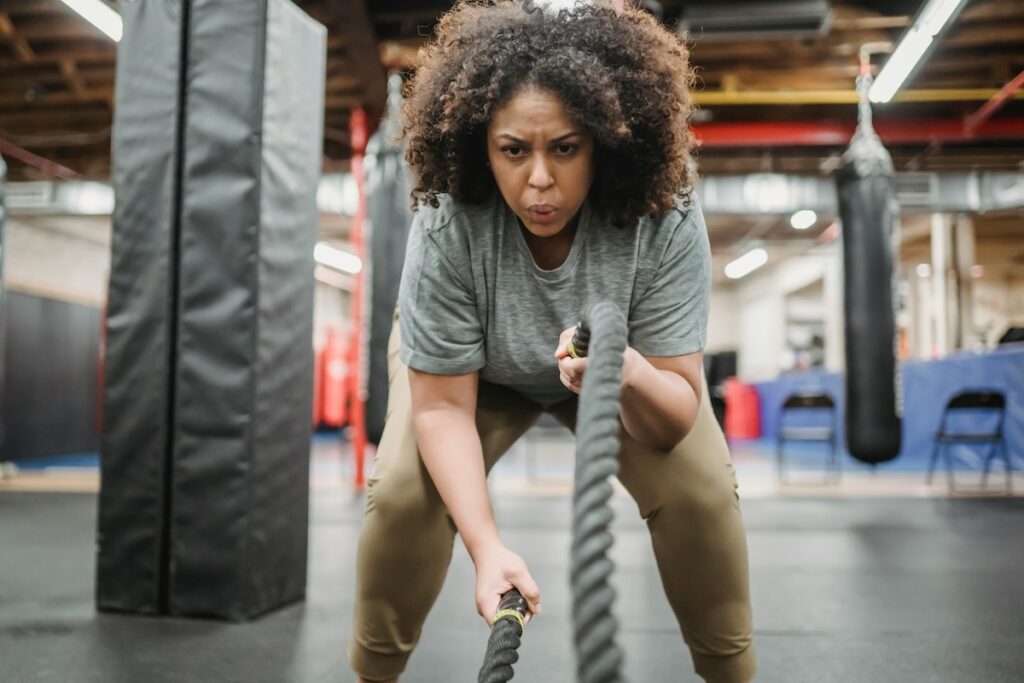
Benefits: Short bursts of intense activity help balance growth hormone and improve metabolism.
Workout Routine: Keep HIIT sessions to 20–30 minutes, 1–2 times per week to avoid overtraining.
Pro Tip: Follow an online class at home or take the stairs whenever possible.
Optimal Workout Routine For Hormone Balance
The optimal physical activity rule for good health is to aim for at least 150 minutes of moderate exercise, or 75 minutes of vigorous exercise, per week, along with muscle-strengthening activities on two or more days.
For example you can do 1 strength training session a week combined with 1 pilates or yoga class and a HIIT session or a long walk.
Balancing exercise and hormones is essential, as both overtraining and undertraining can negatively affect hormone levels. So adjust your routine based on your body’s needs.
Align Exercise with Your Menstrual Cycle
Women’s physical and mental health can be significantly impacted by their menstrual cycle, so workouts should be adjusted accordingly.
During different phases of the cycle, varying levels of intensity are ideal: lower-intensity activities like yoga or walking during menstruation and the luteal phase, and higher-intensity exercises like strength training or HIIT during the follicular phase.
For example, you can opt for high-intensity cardio like running or HIIT in the first part of your cycle when estrogen levels are higher, giving you more energy and stamina.
During your period, when estrogen and progesterone levels are lower, it’s better to focus on lower-intensity cardio like walking and slower yoga types like Yin Yoga to allow your body to recover.
4 Other Lifestyle Factors That Affect Hormones
In addition to exercise, hormones are also sensitive to changes in diet, stress, sleep, and environment.
Here’s why:
Sleep. Poor sleep disrupts cortisol and melatonin, key hormones for recovery. Women in their 20s and 30s need 7–9 hours of sleep per night.
Diet. A poor diet disrupts hormone balance, leading to issues like irregular cycles, mood swings, weight gain, and chronic fatigue. Eating a balanced diet rich in whole foods, healthy fats, and lean proteins supports your hormones.
Stress. Chronic stress leads to hormonal imbalances. Combining exercise with mindfulness practices gives maximum benefit.
Frequently Asked Questions
How long does it take to see results from exercise for hormone balance?
It may take a few weeks to see improvements in energy and mood, depending on the individual.
Can exercise replace hormone therapy?
Exercise supports hormone balance but should be combined with professional medical advice for significant imbalances. If symptoms persist, it’s best to consult with a healthcare provider who can offer blood tests or other diagnostics to pinpoint the cause and recommend treatment.
What if I’m too tired to exercise?
Listen to your body. Start with gentle movements like walking or yoga, and gradually increase intensity as you feel more energized.
Can hormonal imbalances affect women in their 20s and 30s?
Yes, hormonal imbalances can certainly impact younger women in their 20s and 30s. Common signs include irregular periods, mood swings, fatigue, weight gain, acne, and changes in sleep patterns.
Bottom Line
To maintain good hormonal health, it’s important to adopt a balanced lifestyle, including a healthy diet, regular exercise, and stress management techniques. The connection between exercise and hormones is key, with effective exercises for hormonal balance including cardio, strength training, high-intensity interval workouts, and Pilates or yoga.
TL;DR
- Exercise reduces stress and boosts mood.
- Exercise improves insulin sensitivity and balances reproductive hormones.
- Aim for 1-2 hours of cardio and 1-2 strength training sessions combined with a pilates class weekly.
- While on your period, try gentle exercises like walking or Yin Yoga.



